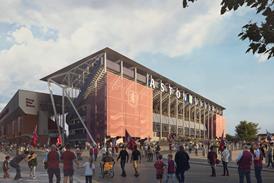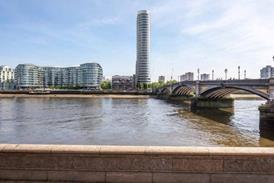Could large shopping centres become dynamic, vibrant, mixed-use, live-work communities in the future? What are the factors that could drive this transformation, and why might it be desirable, asks Matt Bowker

While the focus on high-density, mixed-use development will continue to be in town and city centres for the foreseeable future, significant challenges lie ahead. Our population continues to increase, and our housing crisis grows worse. Development of greenfield and greenbelt land remains controversial as urban sprawl is considered wasteful, inefficient, and unsustainable. And there simply isn’t enough brownfield land in any part of the country to meet projected housing needs alone.
Meanwhile, large shopping centres have been struggling in recent years as the retail experience continues to diversify and evolve. Online shopping now accounts for approximately a quarter of total retail spend and has reduced the requirement for physical space over time. Retail landlords perceive an oversupply of shop space in the UK, with a consensus that many locations have more floorspace than they require.
So, with greenfield and greenbelt development continuing to be seen as highly contentious, insufficient brownfield sites to meet housing needs, and an excess of retail space for which there’s no longer demand, is there a potential opportunity? Could the repurposing of large shopping centres be part of the solution to building enough new homes and many other things we need to live in sustainable locations?
Well, large shopping centres do have inherent advantages that make them suitable for development intensification. Due to considerations made during their initial development, primarily their location, parcel size, and existing infrastructure networks, they present excellent opportunities for conversion into higher-density, mixed-use developments.
Millions of people need to be able to easily reach large shopping centres, so these facilities are typically located in highly accessible areas with substantial infrastructure networks already in place, including utilities, roads, and public transportation systems.
This presents opportunities to leverage existing networks to service new uses on these sites, which is cheaper and more sustainable than building hugely expensive utility networks and transport infrastructure for new developments.
Vast parking lots typically surround large shopping centres, providing great potential for high-density development. Building on top of them or repurposing them with perimeter blocks allows for the retention of some or all the parking. Weaving plazas, playgrounds, and squares around existing buildings and new structures can provide more open space, allowing for significant additional development with improved urban fabric and an enhanced public realm.
There are many options for reimagining large shopping centres
Large shopping centres typically consist of substantial structures that are usually flexible enough to be retrofitted to accommodate new uses and adapt to changing lifestyles and trends. For example, in recent years, leisure has emerged as a desirable use for any thriving retail destination as the emergence of the ‘experience economy’ has created a more diverse shopping environment which mixes retail, leisure, and hospitality. Younger generations, who account for an increasing proportion of consumer spend, often also prefer experience-led activities rather than material goods.
There are numerous instances in the UK where leisure operators have repurposed vacant retail spaces for their operations. Adding more uses in this way has not only increased site density and efficiency, but the repurposing of existing structures can be far more environmentally sustainable than constructing new ones.
While continued but improved retail or leisure use that refreshes the offer can help struggling shopping centres, integrating residential, commercial, and recreational spaces can offer much greater potential to rebalance or replace an overabundance of retail space and help foster a new or revitalised community.
Residential proposals can include a wide range of tenure types, including open market sale, build-to-rent, affordable housing, student housing, and retirement living, encouraging older people to live centrally so they can continue to play an active role in the local community.
>> Also read: Heatherwick’s plans for £500m makeover of 1970s shopping mall in Nottingham revealed
Delivering a larger range of tenure types and mixes of uses in this manner can generate footfall during and after business hours to support the evening economy. Including a variety of amenities will provide convenience and accessibility for users and residents and create a more dynamic and livelier environment for people to live, work, and play.
There are many options for reimagining large shopping centres with an enhanced leisure offer, improved public realm, urban living, shared workspace, and amenities to support the local community. All these applications will help to create more balanced places which deliver experiences, encourage connections, and put people first.
So, with the right vision, the transformation of large shopping centres into future urban centres has few limits and could create far more interesting, diverse, and sustainable places that we can all enjoy and benefit from.
>> Also read: Green light for Corstorphine & Wright’s Cambridge shopping centre reinvention
Postscript
Matt Bowker is an urban designer and board director of CODA Studio
















No comments yet